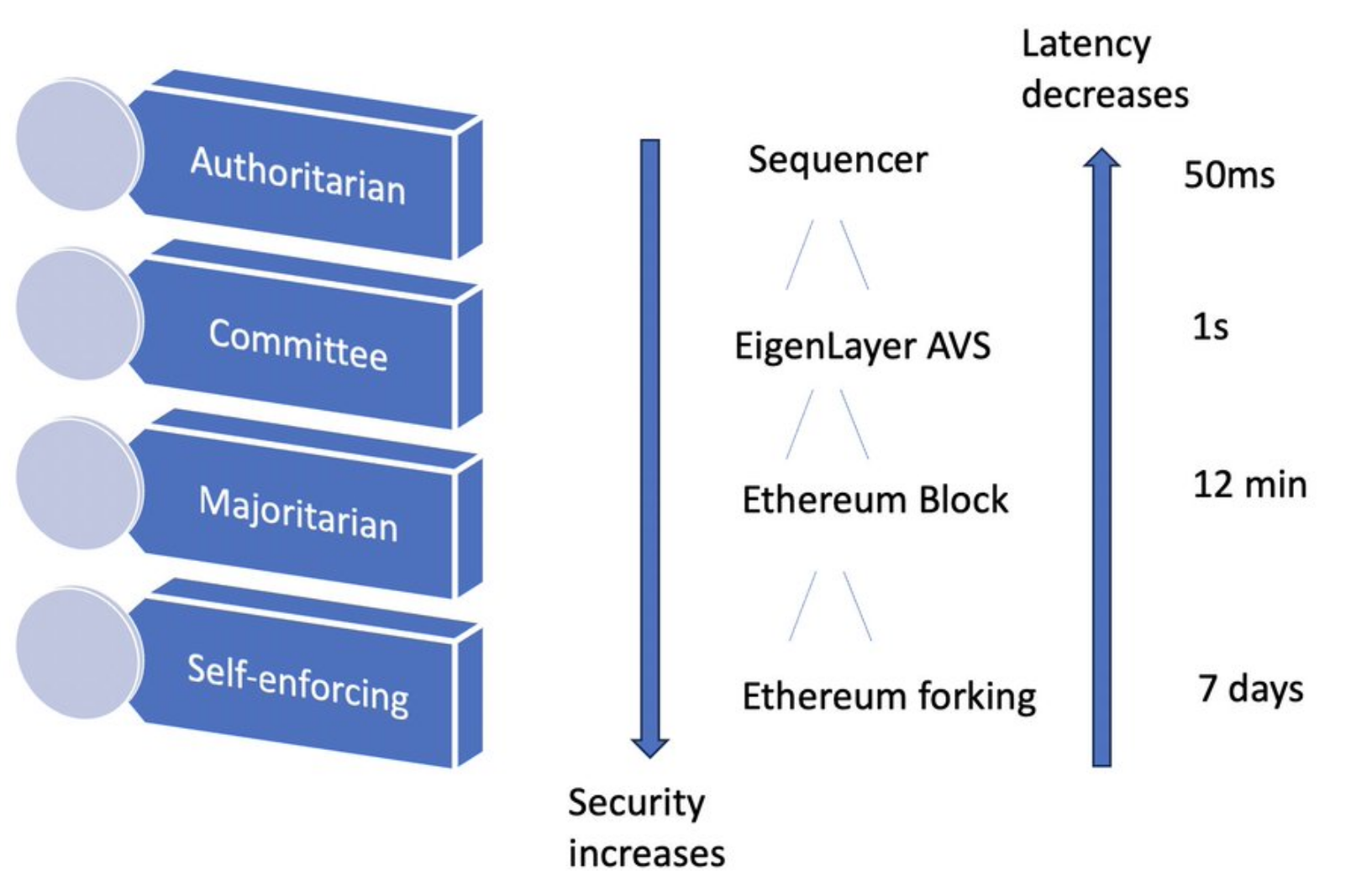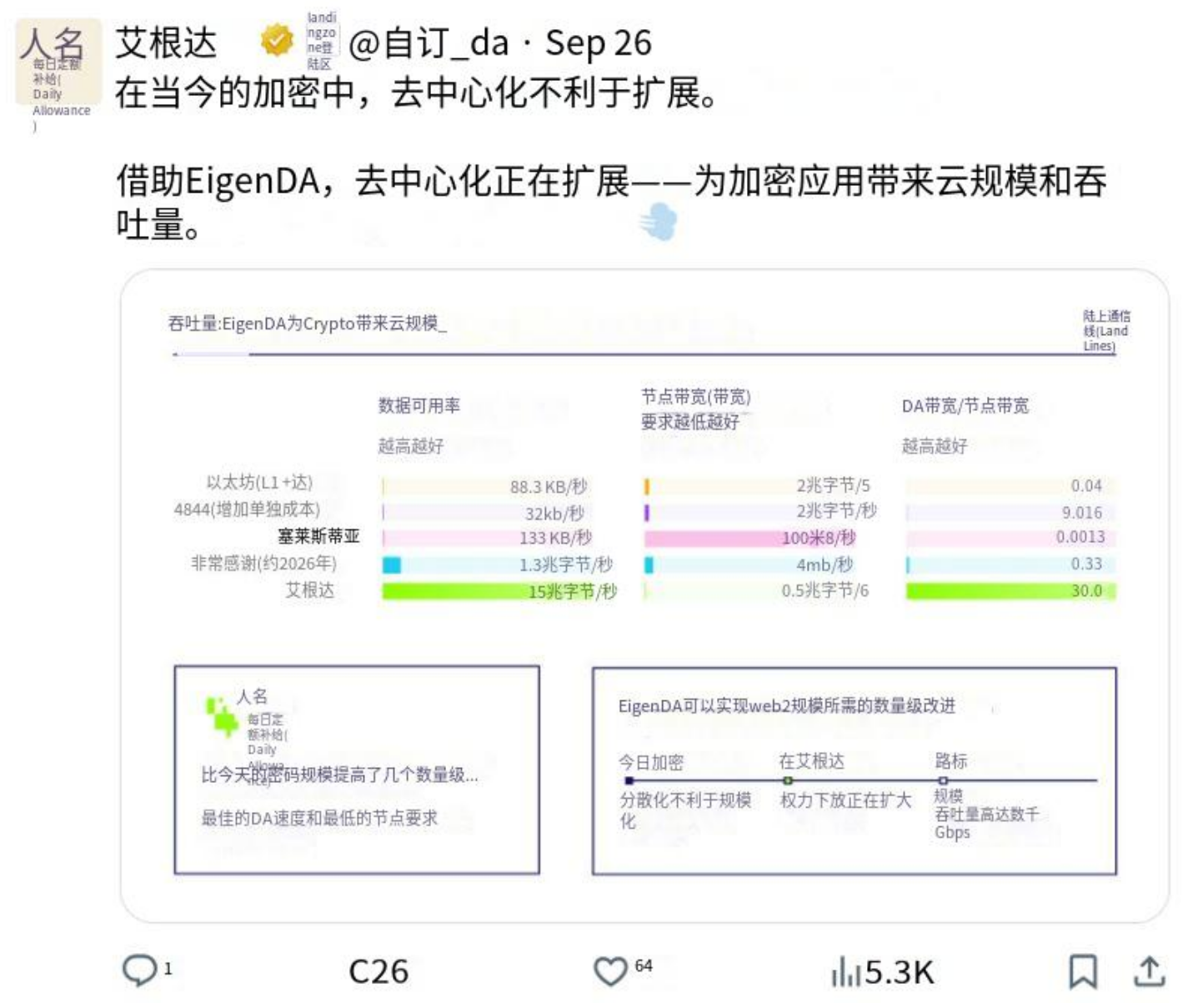Recently, a debate showed that ETH surpasses the fast but limited SOL in terms of user experience and long-term development due to its nested coordination and predictability.
Author: @sreeramkannan
Translation: Plain Language Blockchain

Recently, @calilyliu and @sreeramkannan had a debate on ETH vs SOL. In short: the final argument is: ETH wins.
The reasons are as follows:
ETH: Nested Coordination + Asynchronous Scaling
SOL: Fast, but complete replication limits growth
L2: Seen as a weakness, but in reality, it is ETH's supersonic missile
Cultural Importance: ETH's value > Individual interests (this is important!)
Vision: ETH = World Computer, SOL = Fast Nasdaq
Trade-offs: ETH builds trust, SOL iterates quickly
But wait, there's more… the core argument is: ETH L2 architecture = Nested Coordination Mechanism

Self-executing (Fork: only when blocks can be verified by users), takes a few days
Majority (validators confirm a block), takes a few minutes
Committee (Eigenlayer validator committee provides quick confirmation), takes 1 second
Authority (sorter provides instant confirmation), takes 10 milliseconds
What’s the result?
User experience reaches the level of Instagram while maintaining Bitcoin-level self-verifiability, meaning users can complete transactions quickly and confidently verify the authenticity of information. This combination brings a better user experience and trust foundation to blockchain applications!
1. What is the foundation of ETH?
Building trust through predictability. Imagine 500 people fighting over minor changes. Sounds like a nightmare, right? But this is ETH's advantage; it builds long-term trust. You know the rules won’t change overnight. What about SOL? An organization can change the rules at any time, and the boundaries between protocols and applications are blurred.
2. What are SOL's limitations?
It is complete replication (like all other cryptocurrencies):
Every node downloads all data
System throughput = Single node bandwidth
More nodes ≠ More throughput
This is a dead end for scalability.
3. What is ETH's solution?
Danksharding
n nodes * 10 MB/s = n*10 MB/s throughput
More nodes = More throughput
With a million validators, the throughput we are talking about can theoretically reach several TB per second.
This is not a typo.
EigenDA is now making all of this a reality.

4. L2: ETH's Secret Weapon
Instant confirmation (100 milliseconds)
Security comes from ETH
The best place to build most applications today
Culture beats strategy: ETH culture > SOL strategyWhy? Because of shared values: anti-censorship, open innovation, trustworthyneutrality
These are not just buzzwords. They are the foundation of trust.
5. ETH's Vision: World Computer
Not just faster payments; we are talking about applications with trustworthy commitments. Imagine a crypto-native Facebook that promises, “We will not change the privacy policy without the majority of users' consent.”
How to do it? Make computation verifiable on ETH. Users can trust this commitment. No more Web2 “take it or leave it” ultimatums.
This is the power of ETH's world computer vision.
6. Self-verification: ETH's North Star
Every user should verify the entire system. Sounds crazy? Maybe. But this is key to achieving true decentralization. This limitation initially restricted throughput.
Rollups cracked this problem: maintaining self-verification, significantly increasing throughput, user verification proof, rather than all data, completely overturning the game rules.
7. Asynchronous vs Synchronous Composability
ETH: Asynchronous Composability
SOL: Synchronous Composability
Most real-world applications require asynchronous.
Think of large multiplayer online games; ETH has the right idea.
8. Asset Onboarding and Liquidity
SOL's choice: A large pool
ETH's strategy: Distributed across multiple L2s
SOL seems simpler, but there’s a problem: single point of failure.
ETH may seem decentralized, but it is resilient.
ETH = Programmable currency across all L2s
Long-term resilience > Short-term convenience
9. Ecosystem Development: ETH's Advantage
Why do we choose to build EigenLayer on ETH? Simple. Predictability.
With ETH, you know the rules of the game, and these rules won’t change overnight.
As for the blockchain itself? It won’t take away your interests.
Sure, Solana is fast, but there’s a problem: an organization can devour any good idea at any time.
Where are the boundaries between protocols and applications?
No one can say for sure.
And ETH? It’s an open playground.
You can build and innovate on L2, sleep soundly,
your ideas still belong to you.
What’s the result? ETH attracts real builders,
those with vision,
who focus on long-term development.
10. Verdict: ETH vs SOL
SOL = Sprinter
ETH = Marathon Runner
In the crypto world, we fight for the long term. The future is not “speed or security,” but “speed and security.”
ETH + EigenLayer makes it all possible.
We are not just building on ETH; we are accelerating it.
Which team do you support? Share your thoughts below.
Article link: https://www.hellobtc.com/kp/du/10/5480.html
Source: https://x.com/sreeramkannan/status/1846577833641914531
免责声明:本文章仅代表作者个人观点,不代表本平台的立场和观点。本文章仅供信息分享,不构成对任何人的任何投资建议。用户与作者之间的任何争议,与本平台无关。如网页中刊载的文章或图片涉及侵权,请提供相关的权利证明和身份证明发送邮件到support@aicoin.com,本平台相关工作人员将会进行核查。




